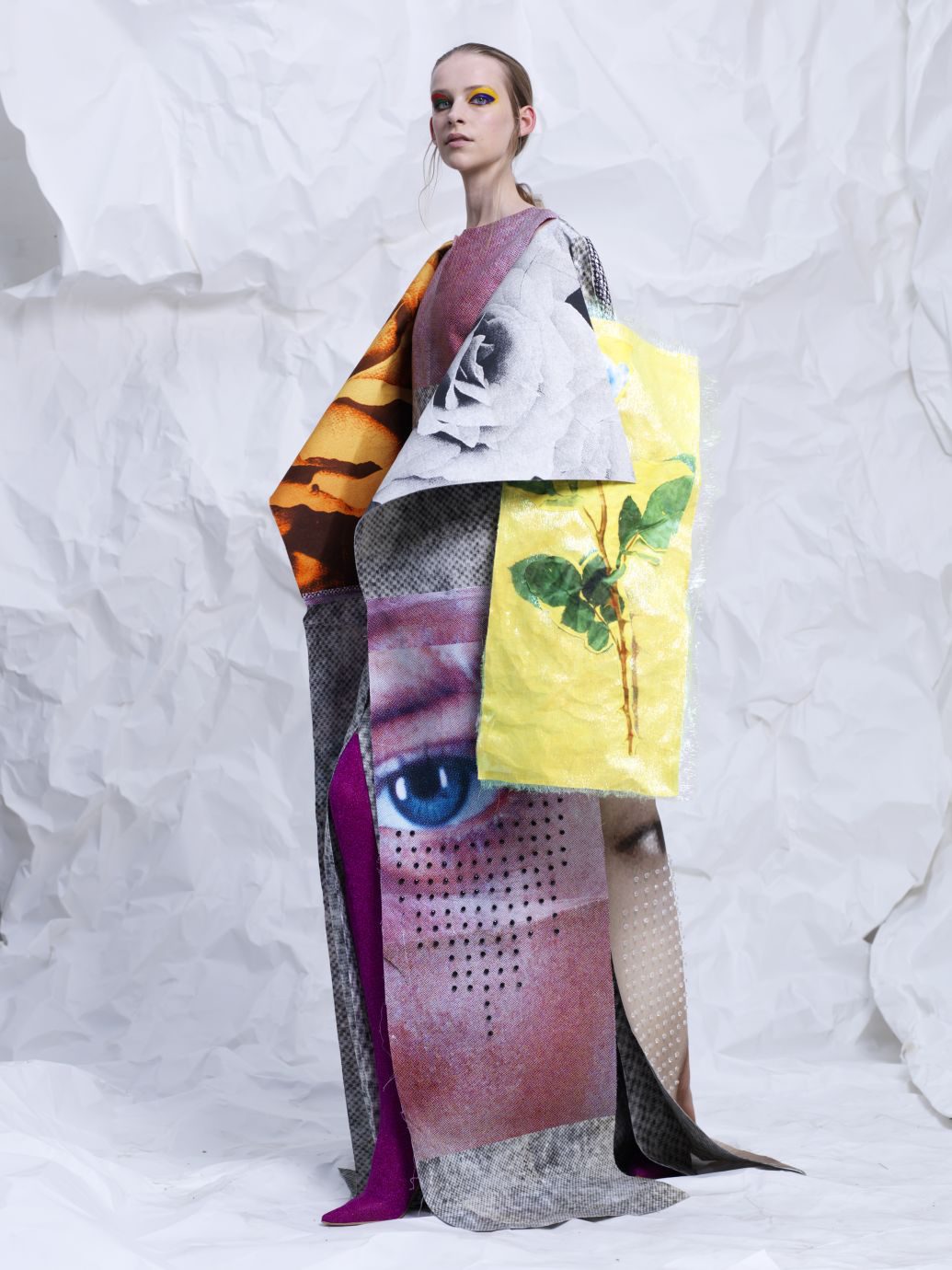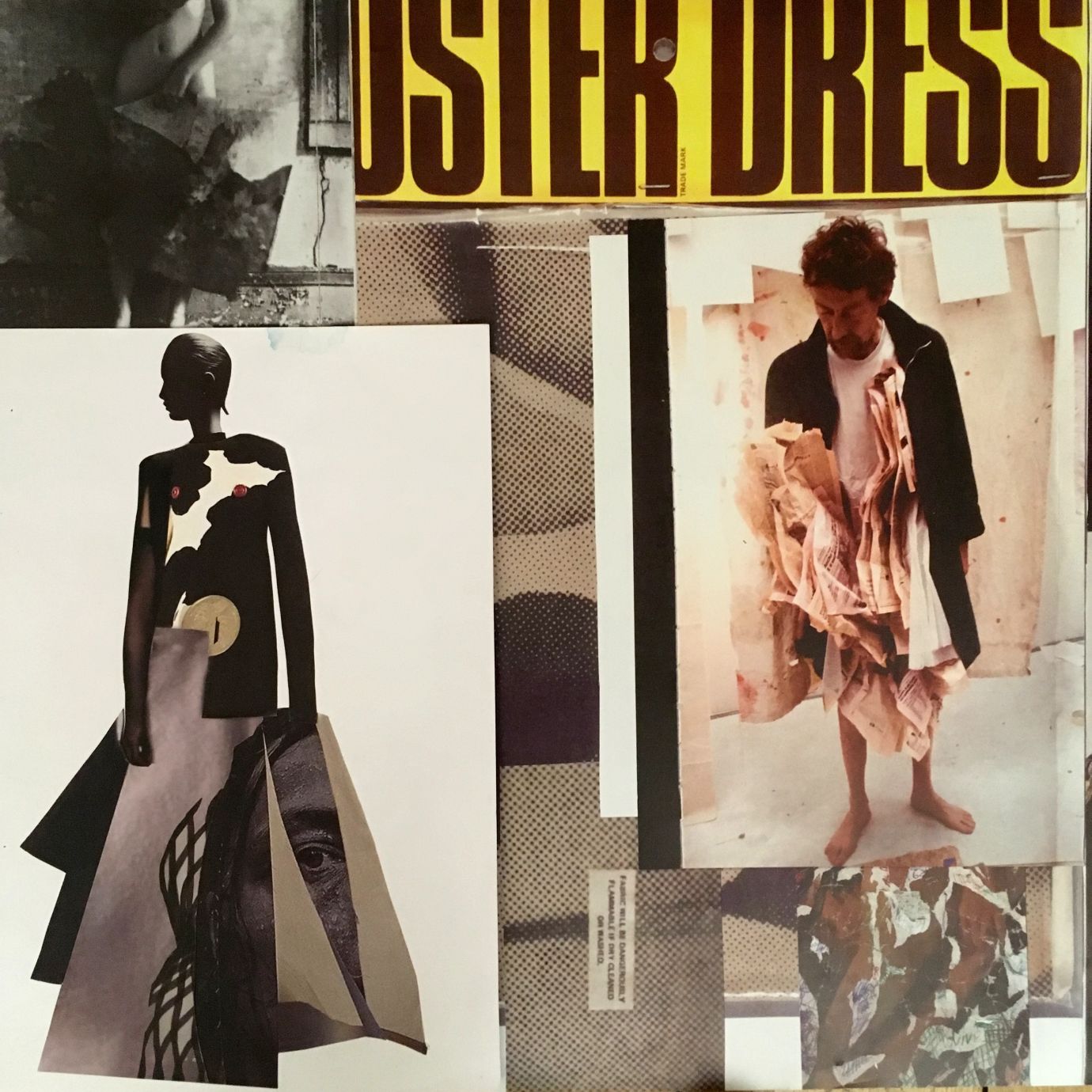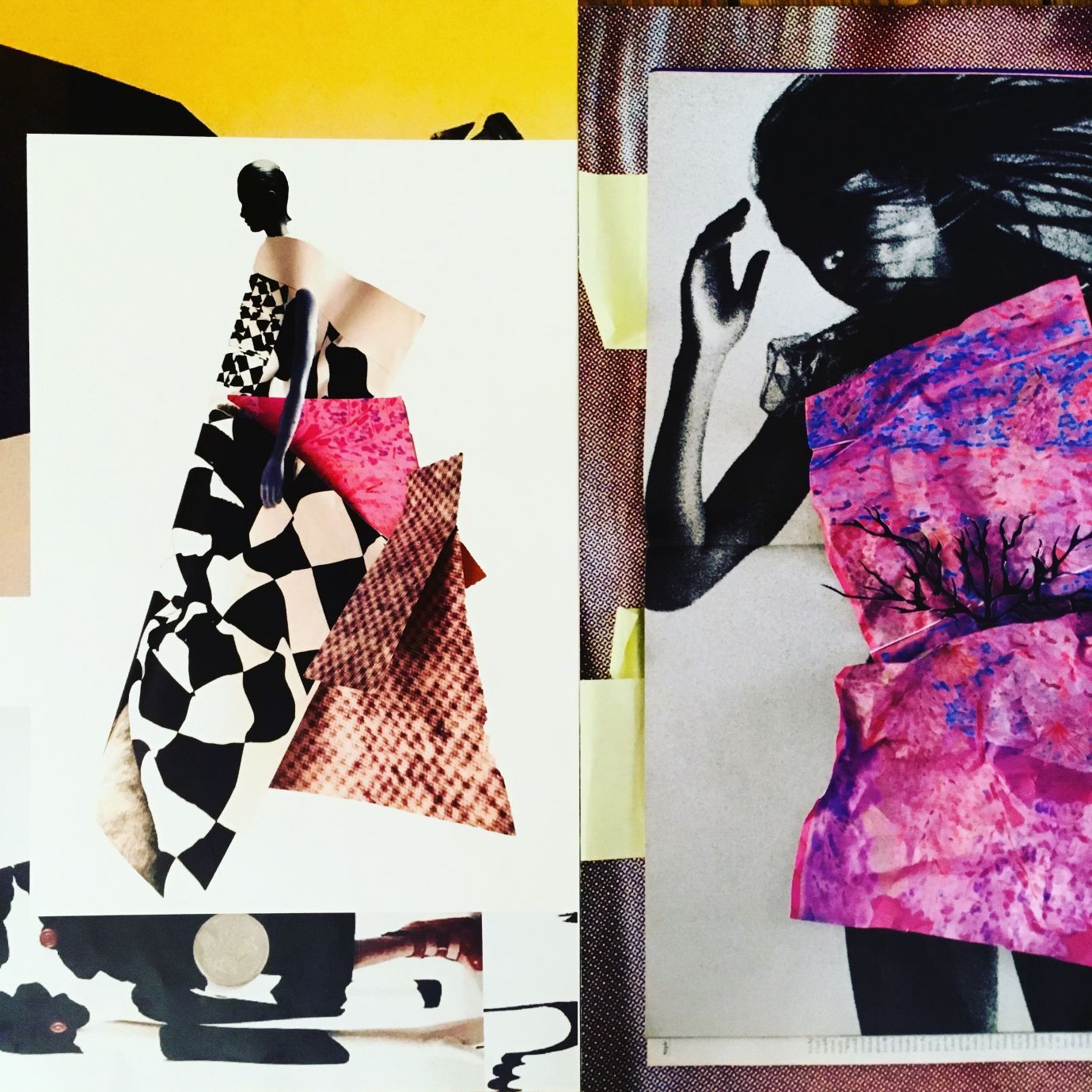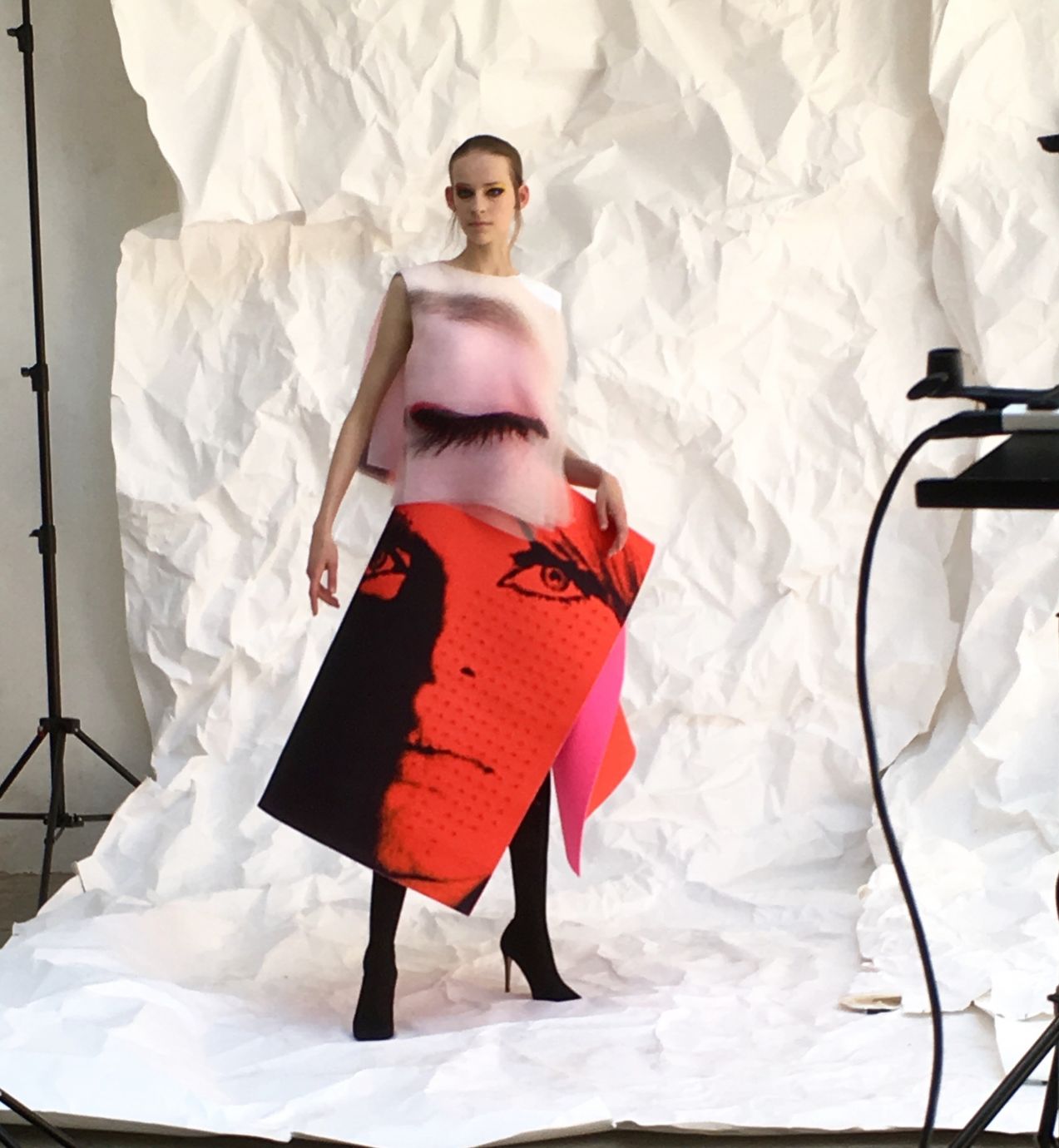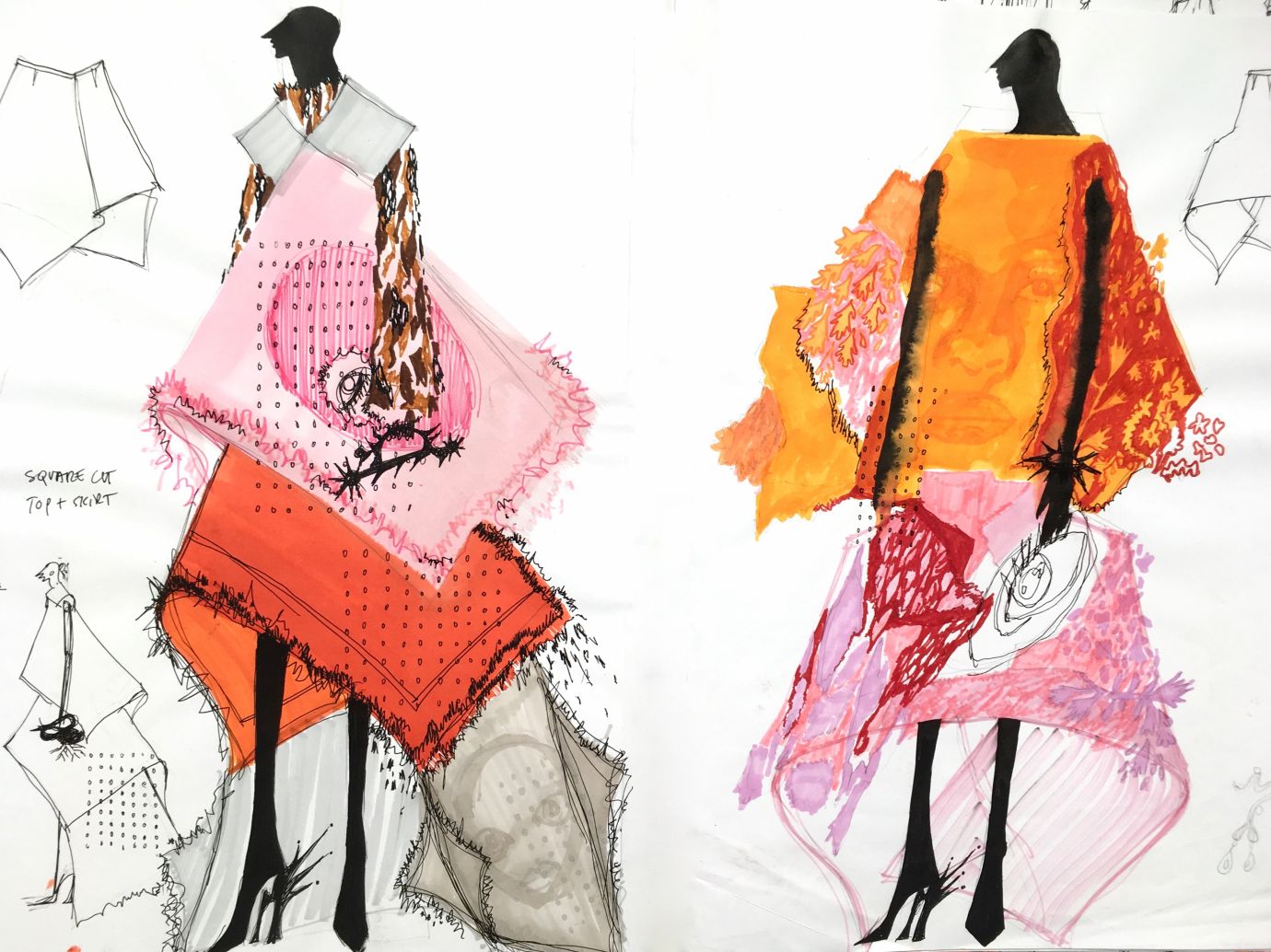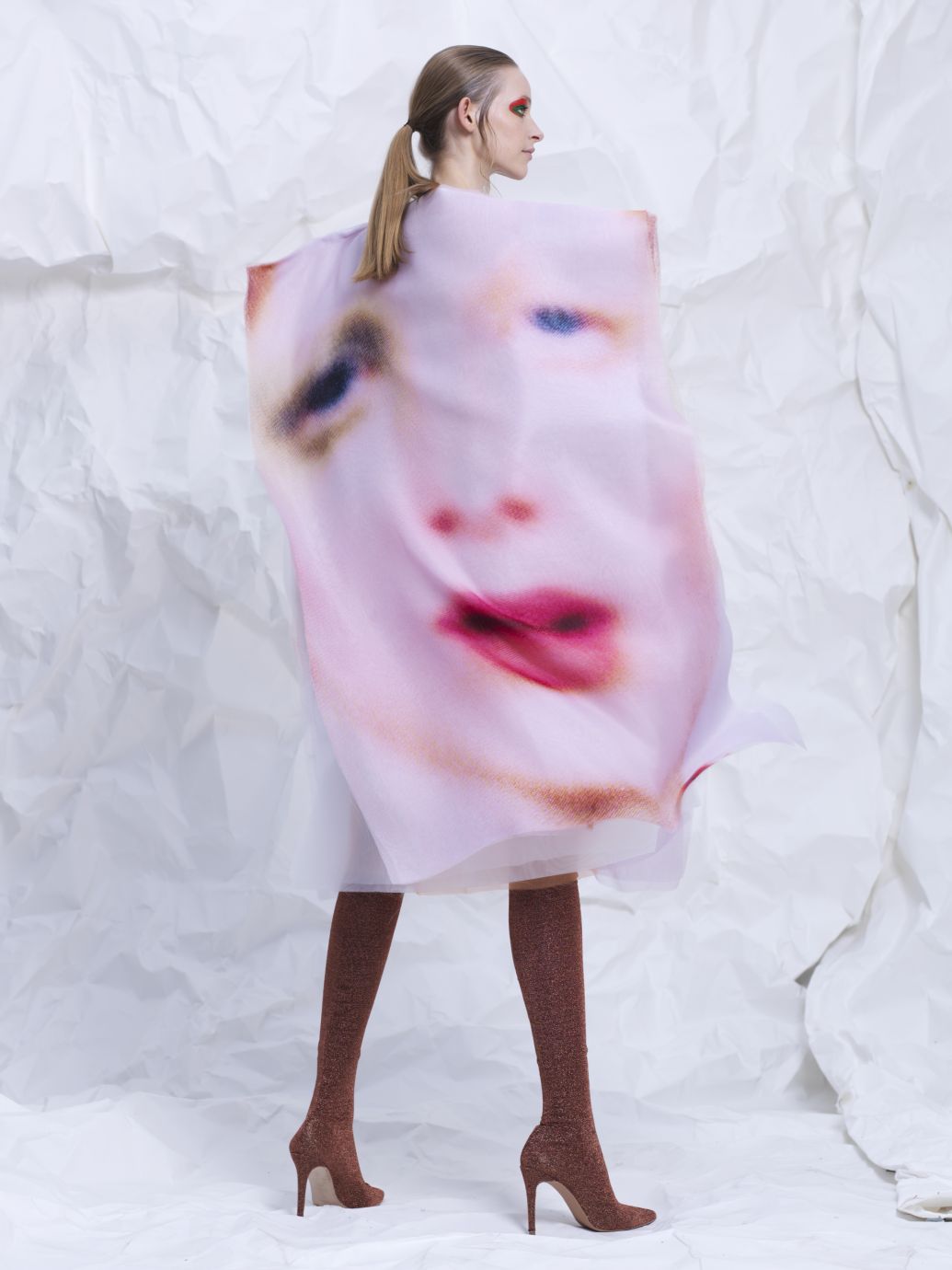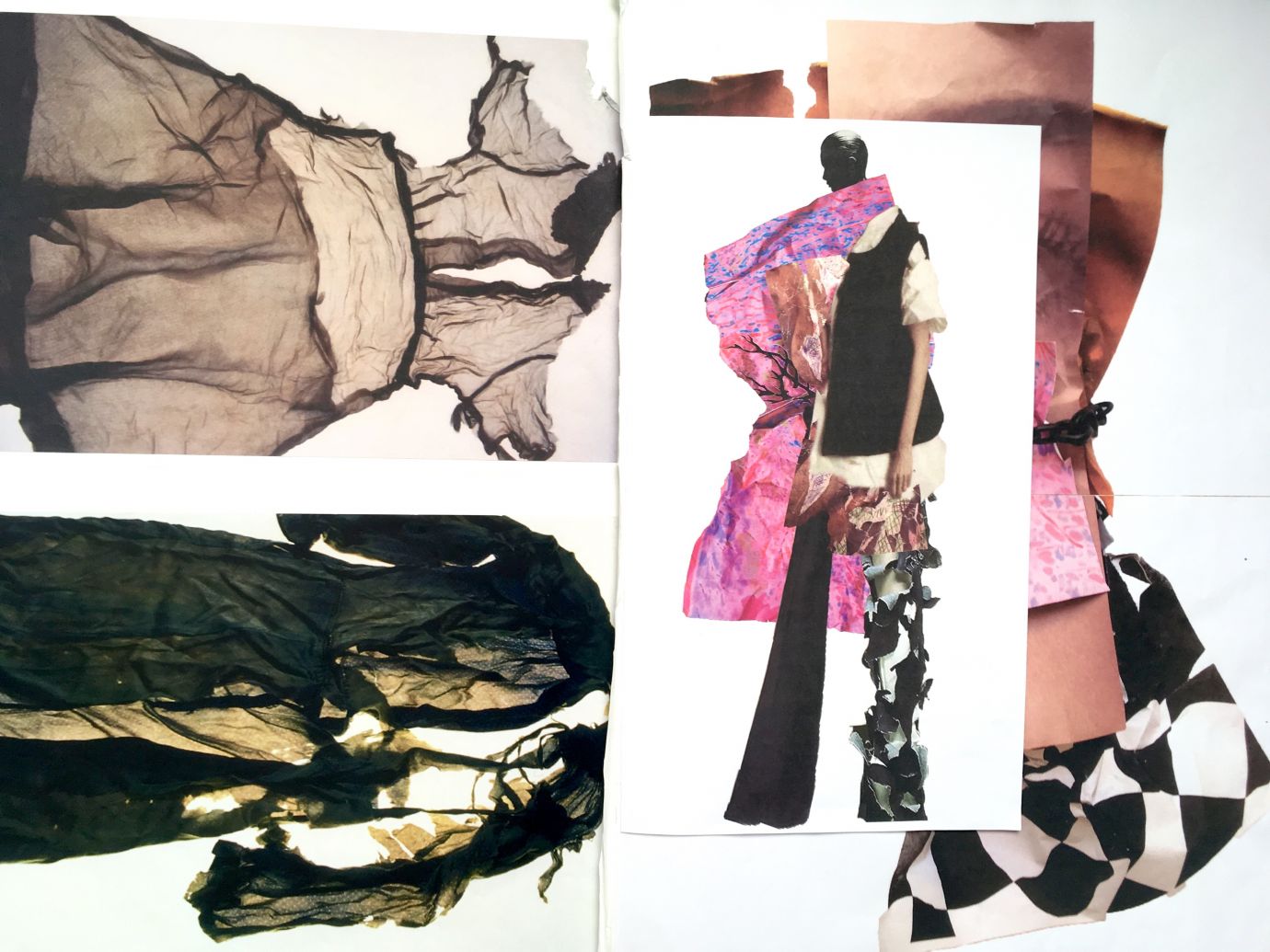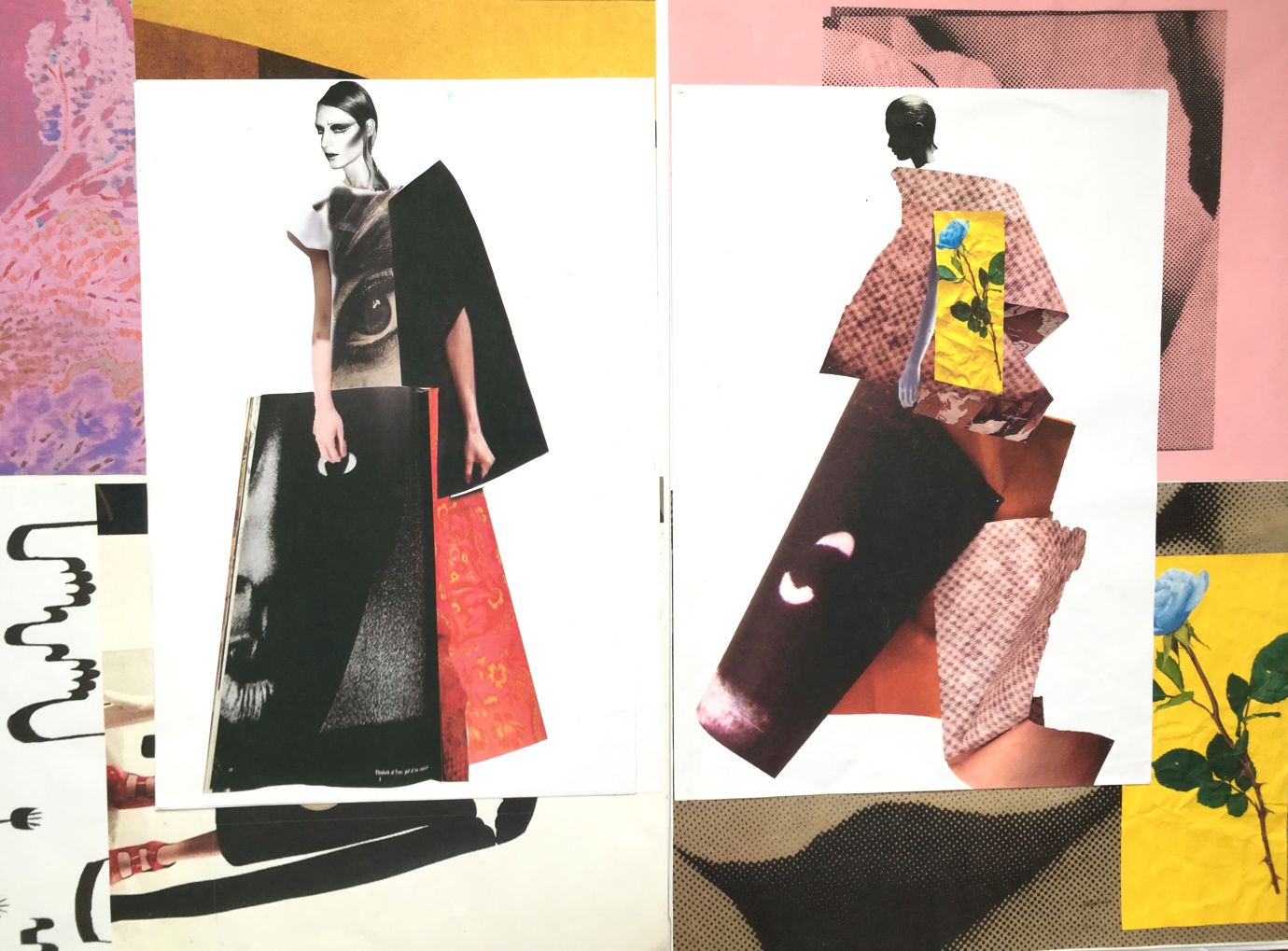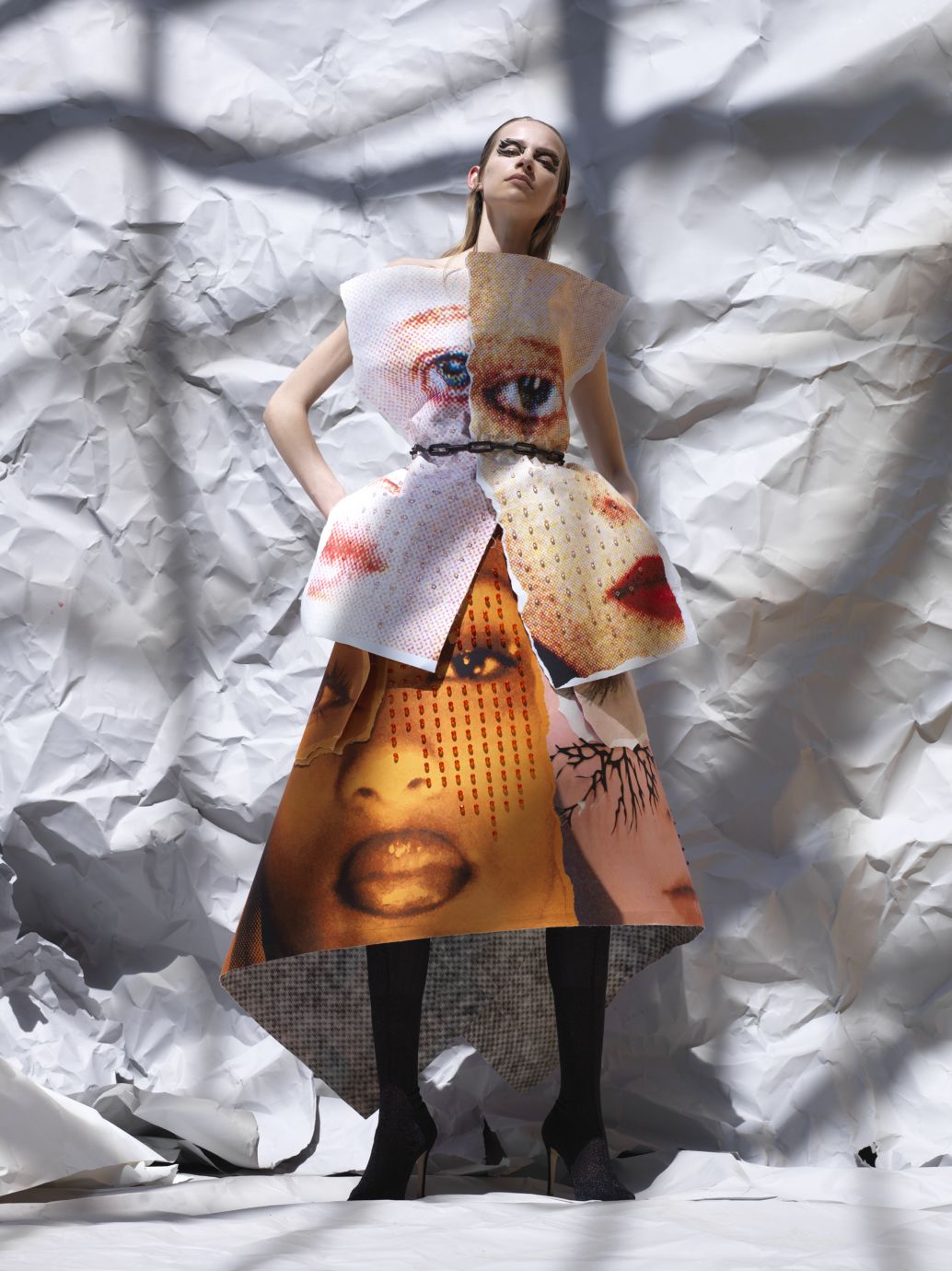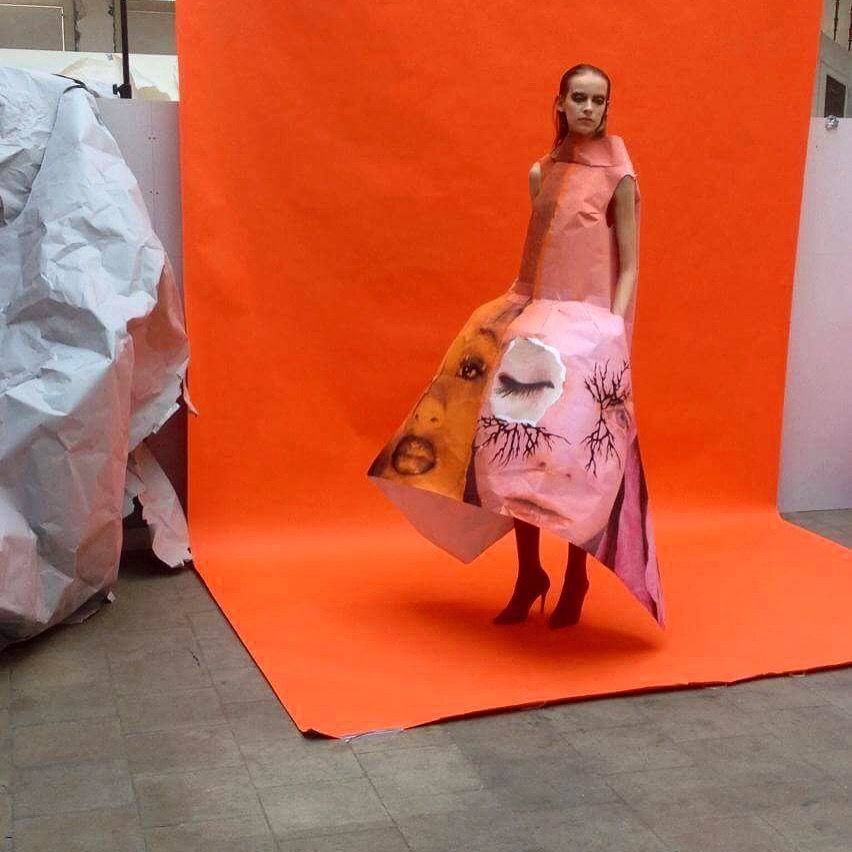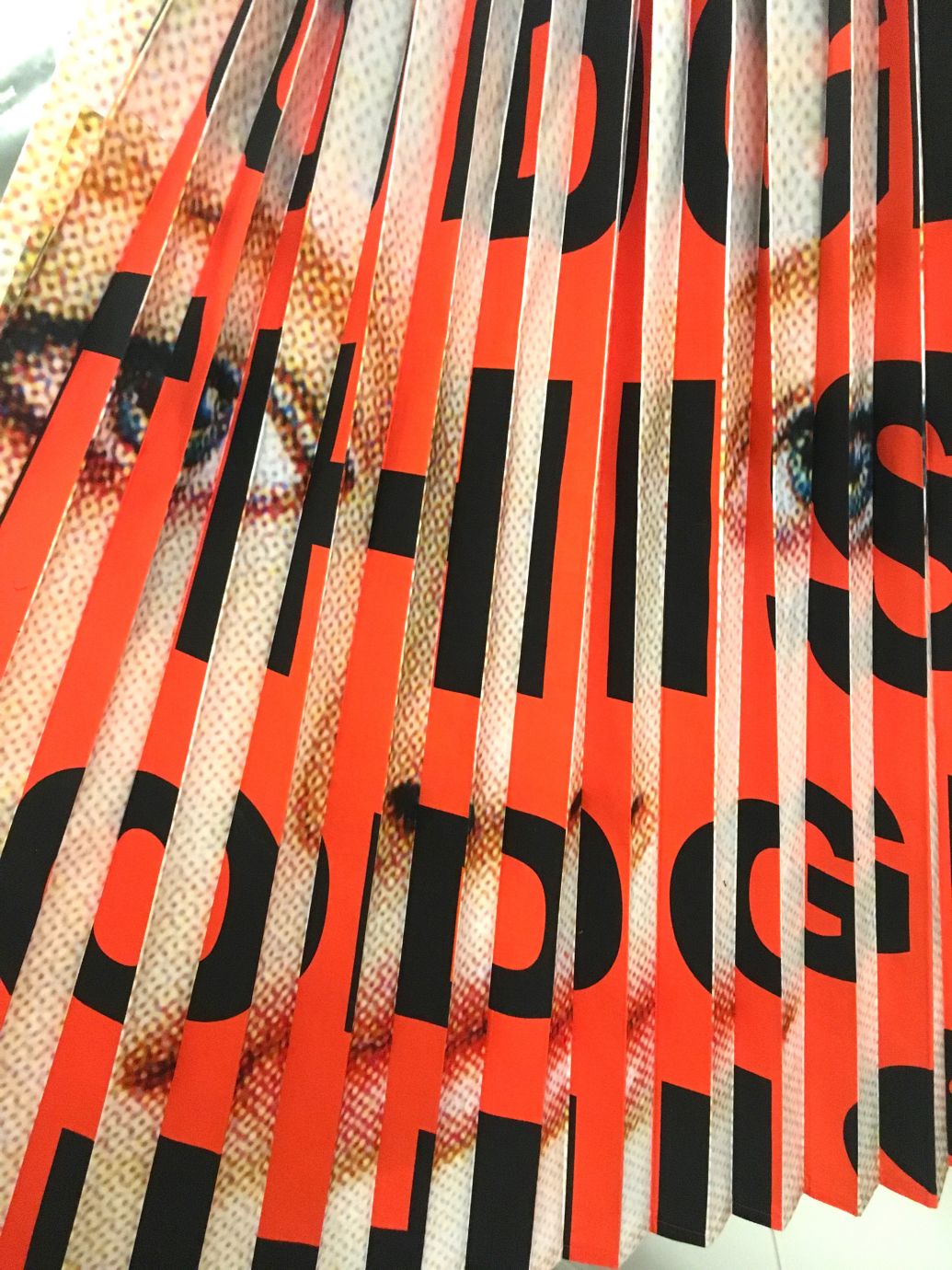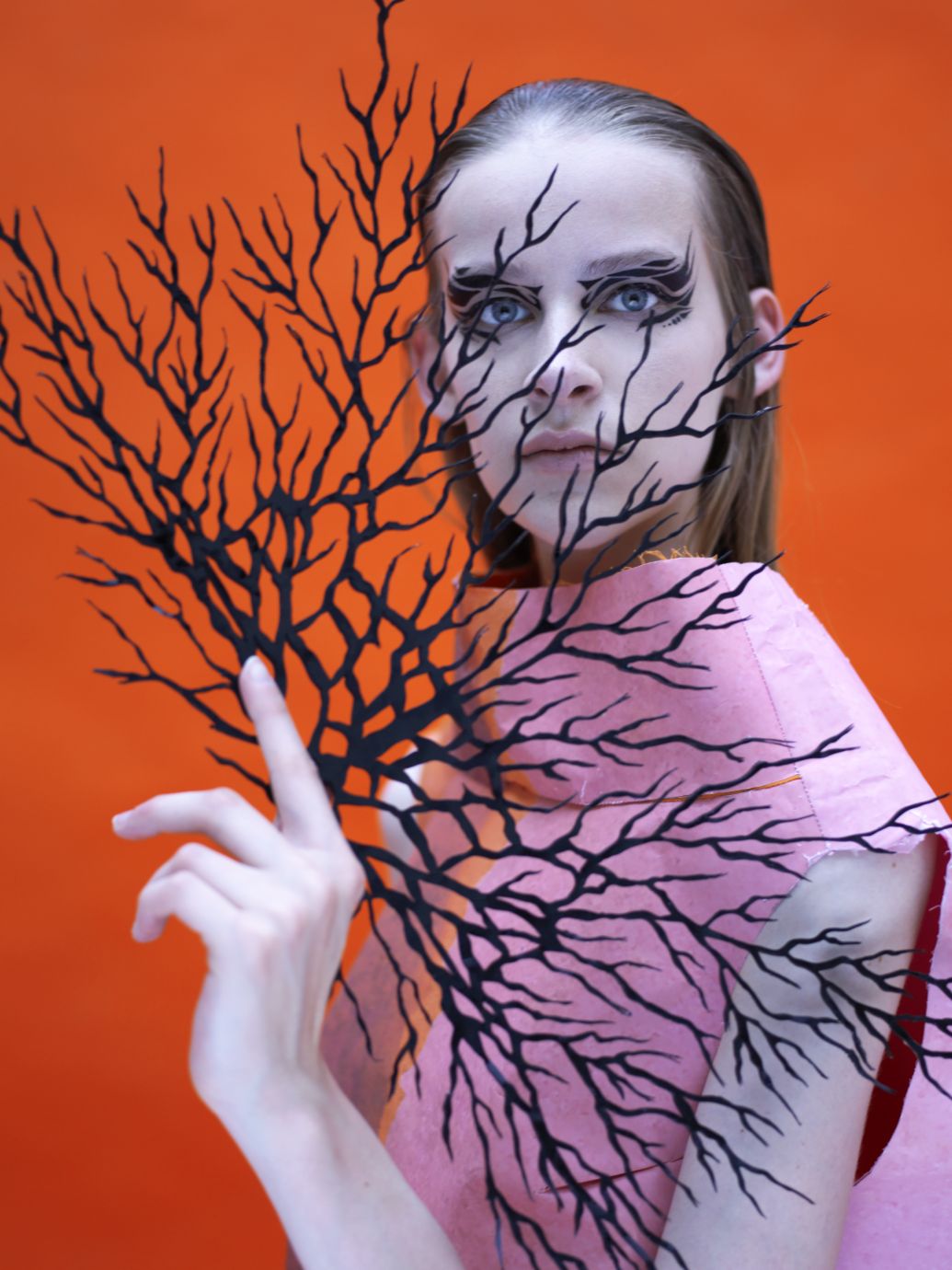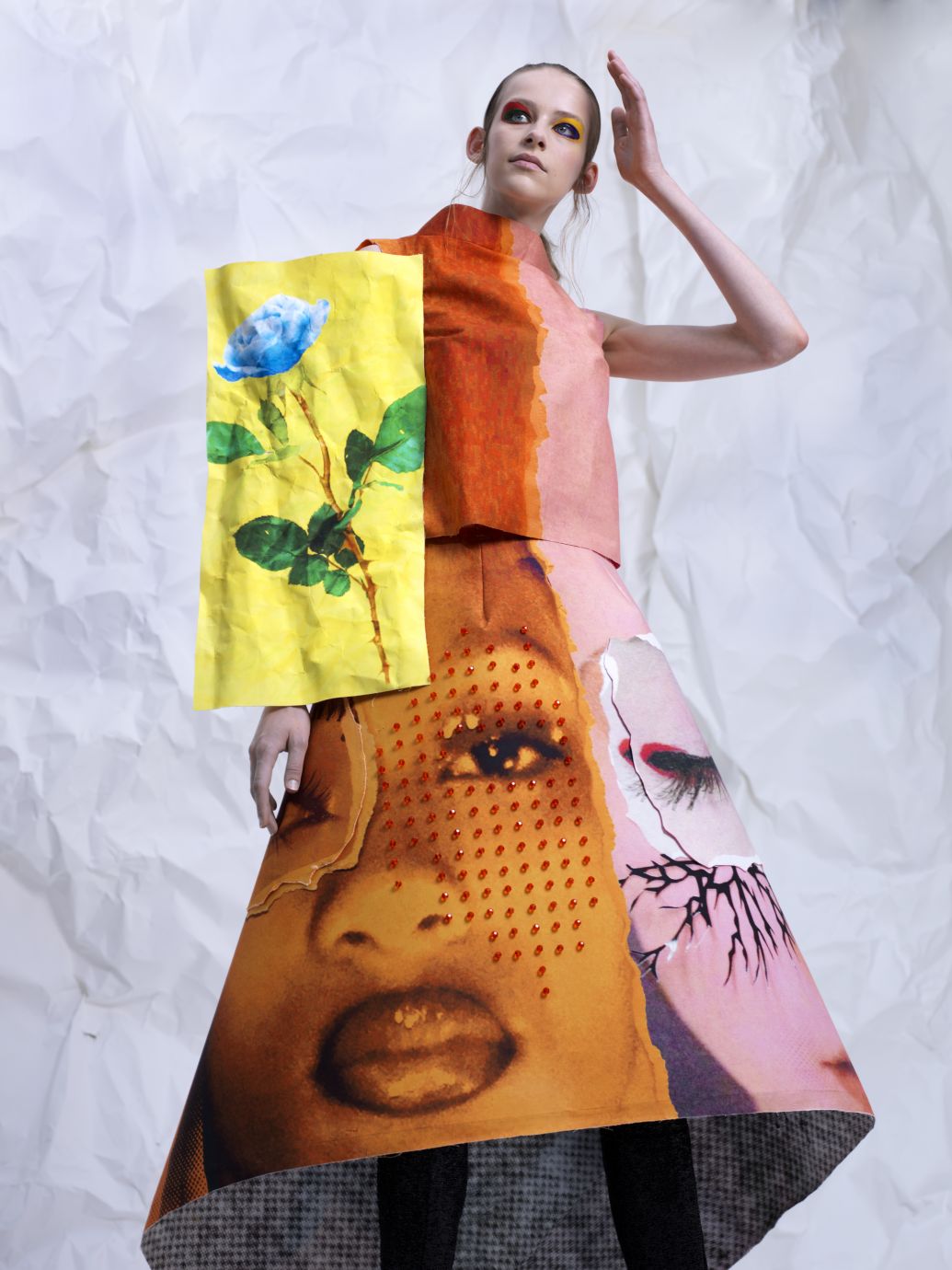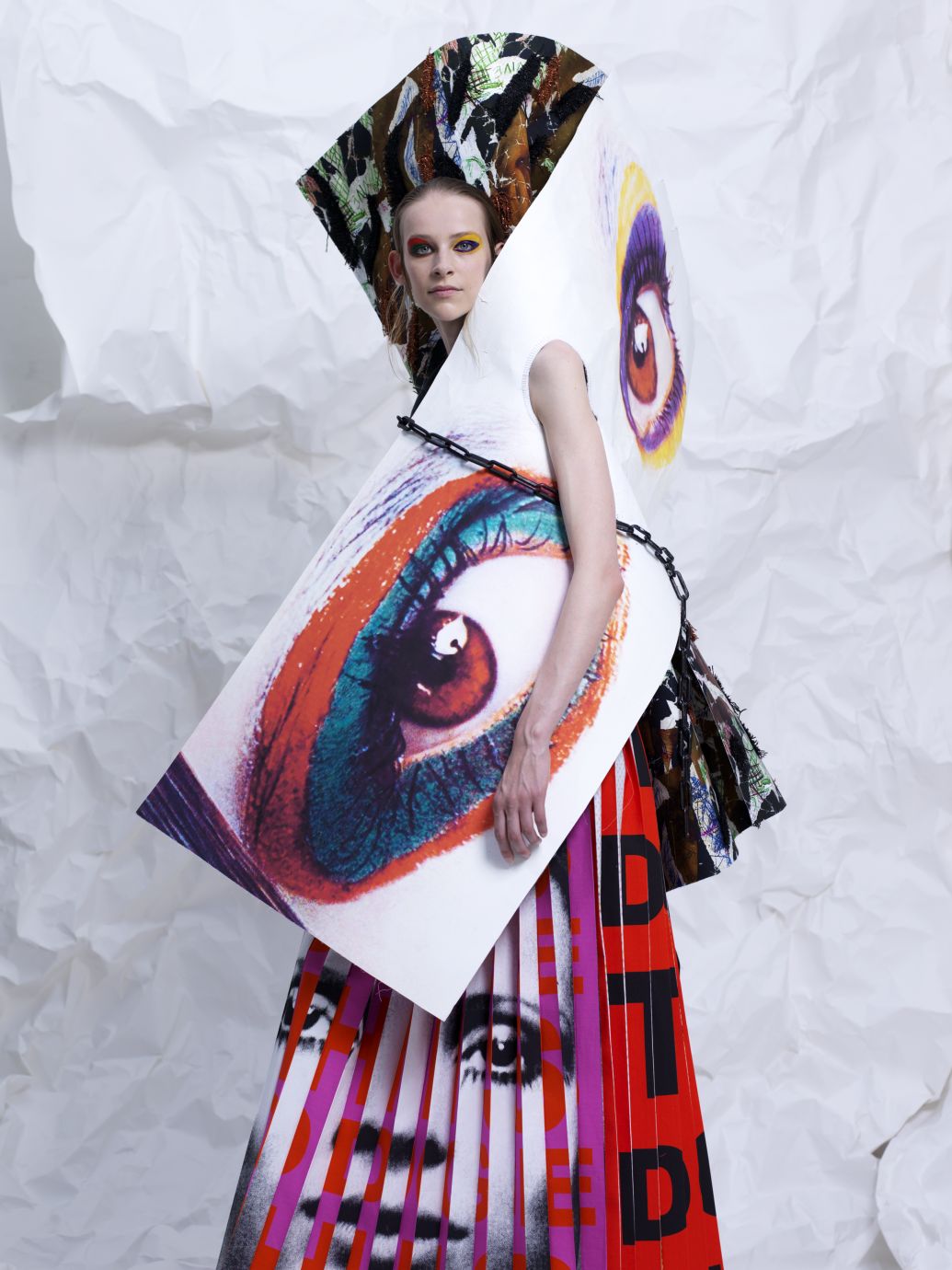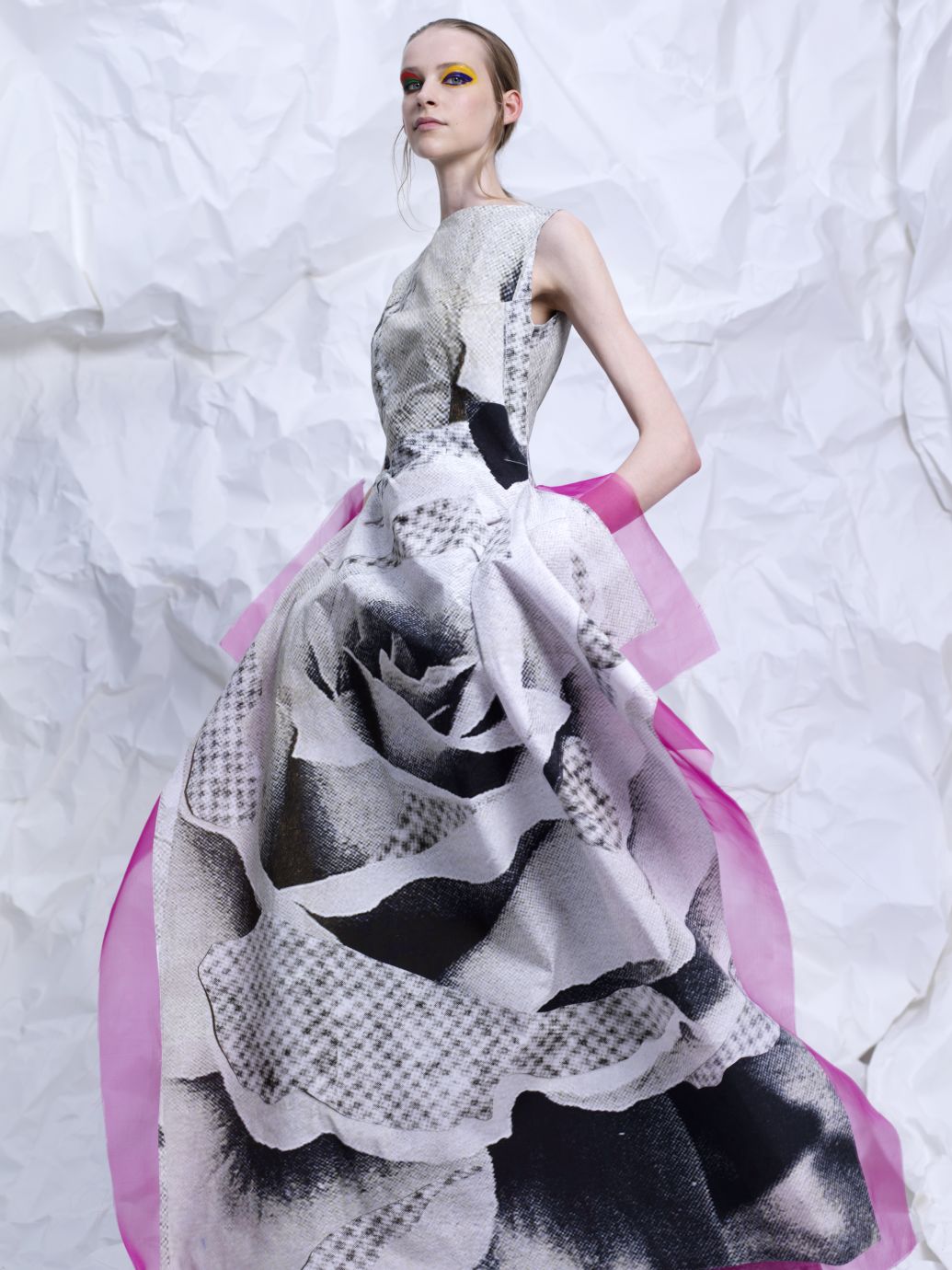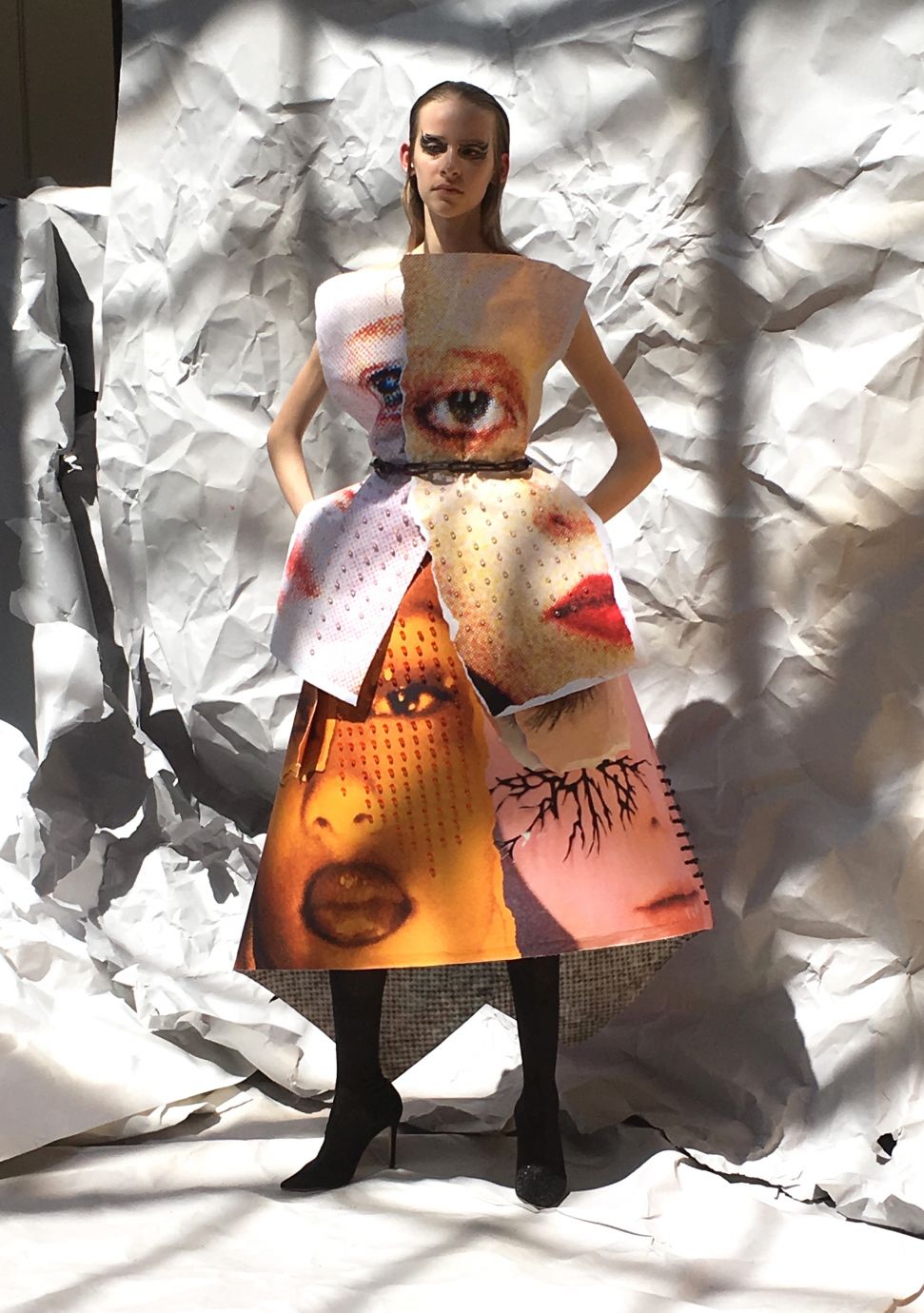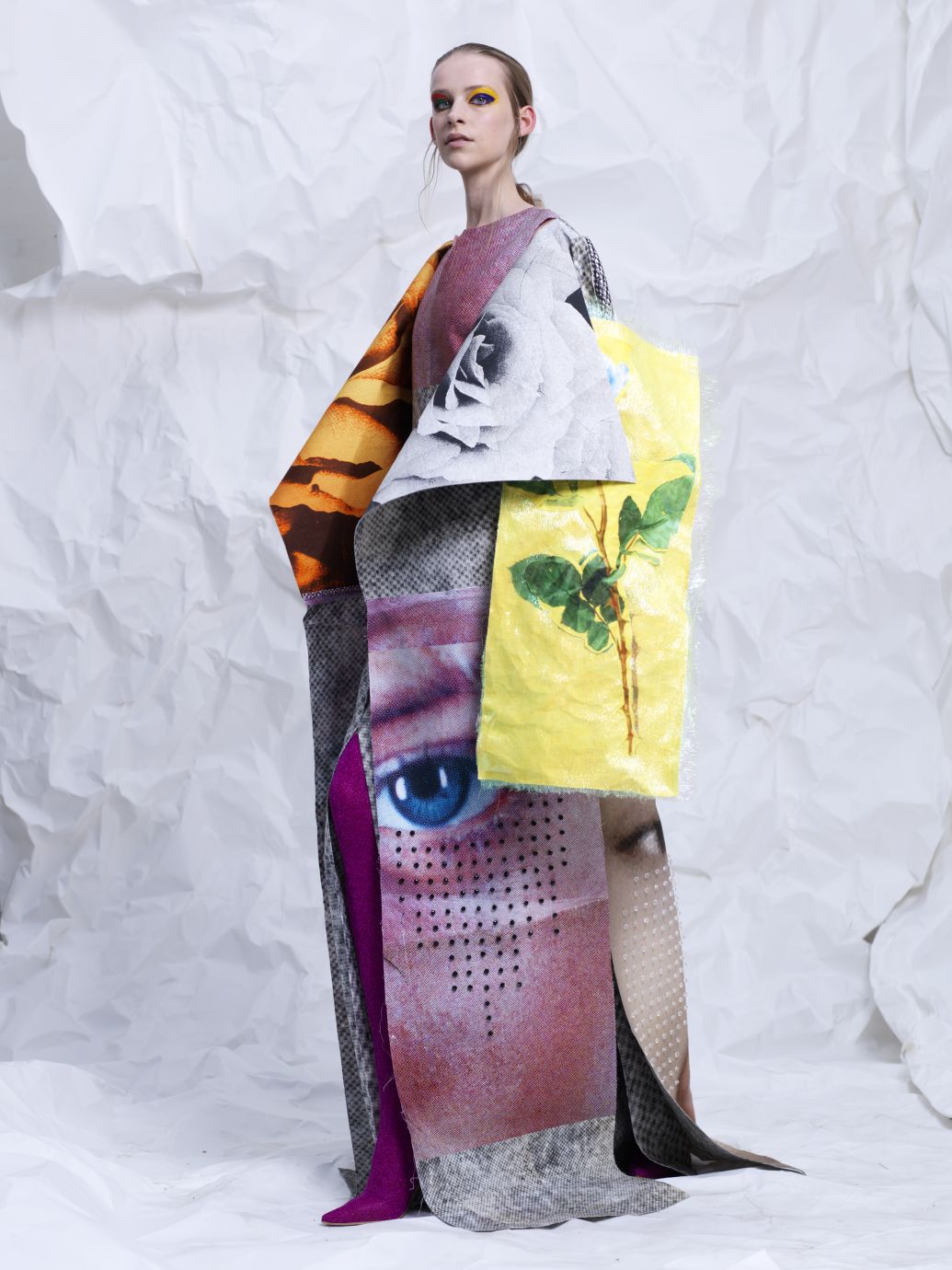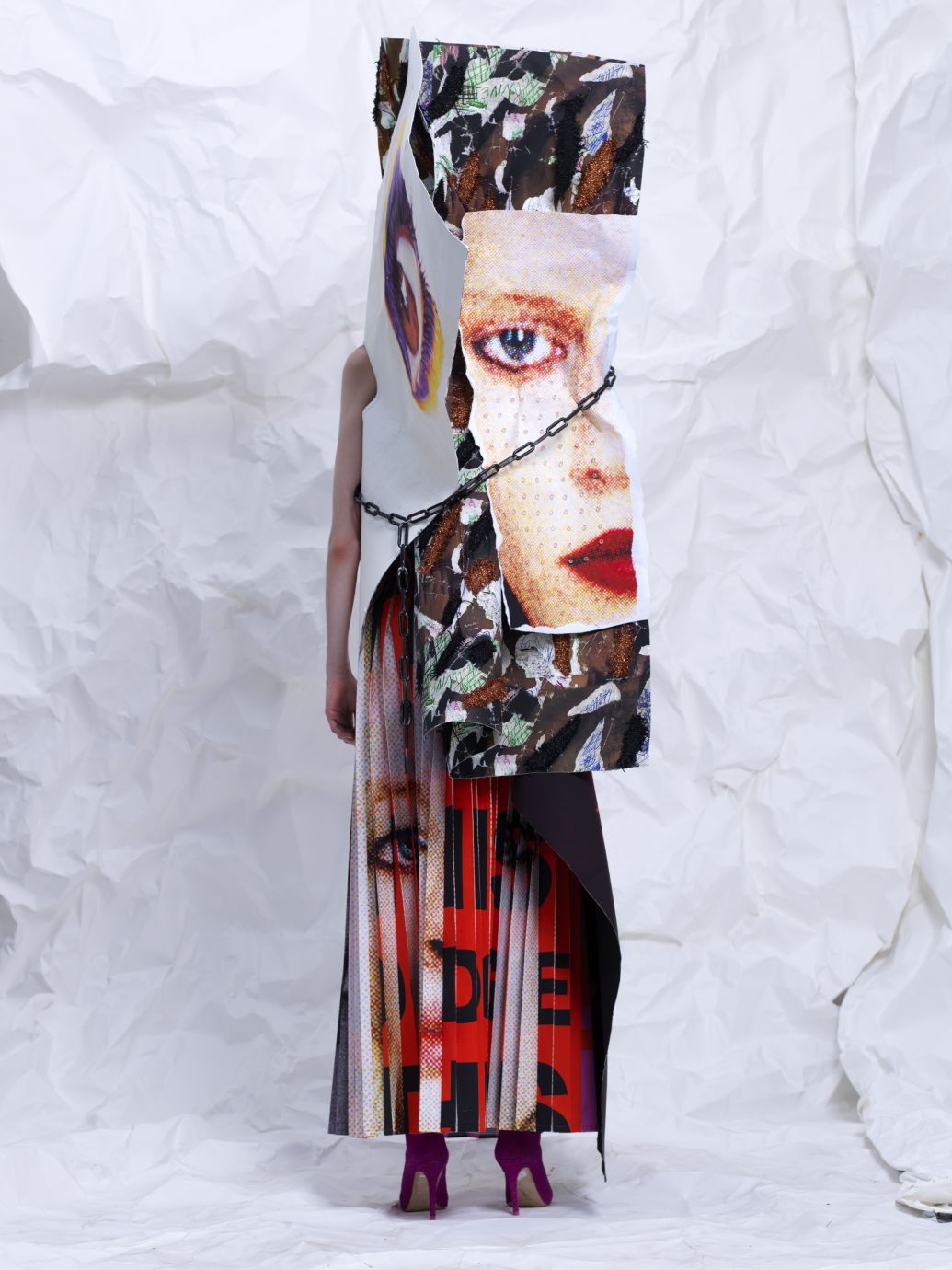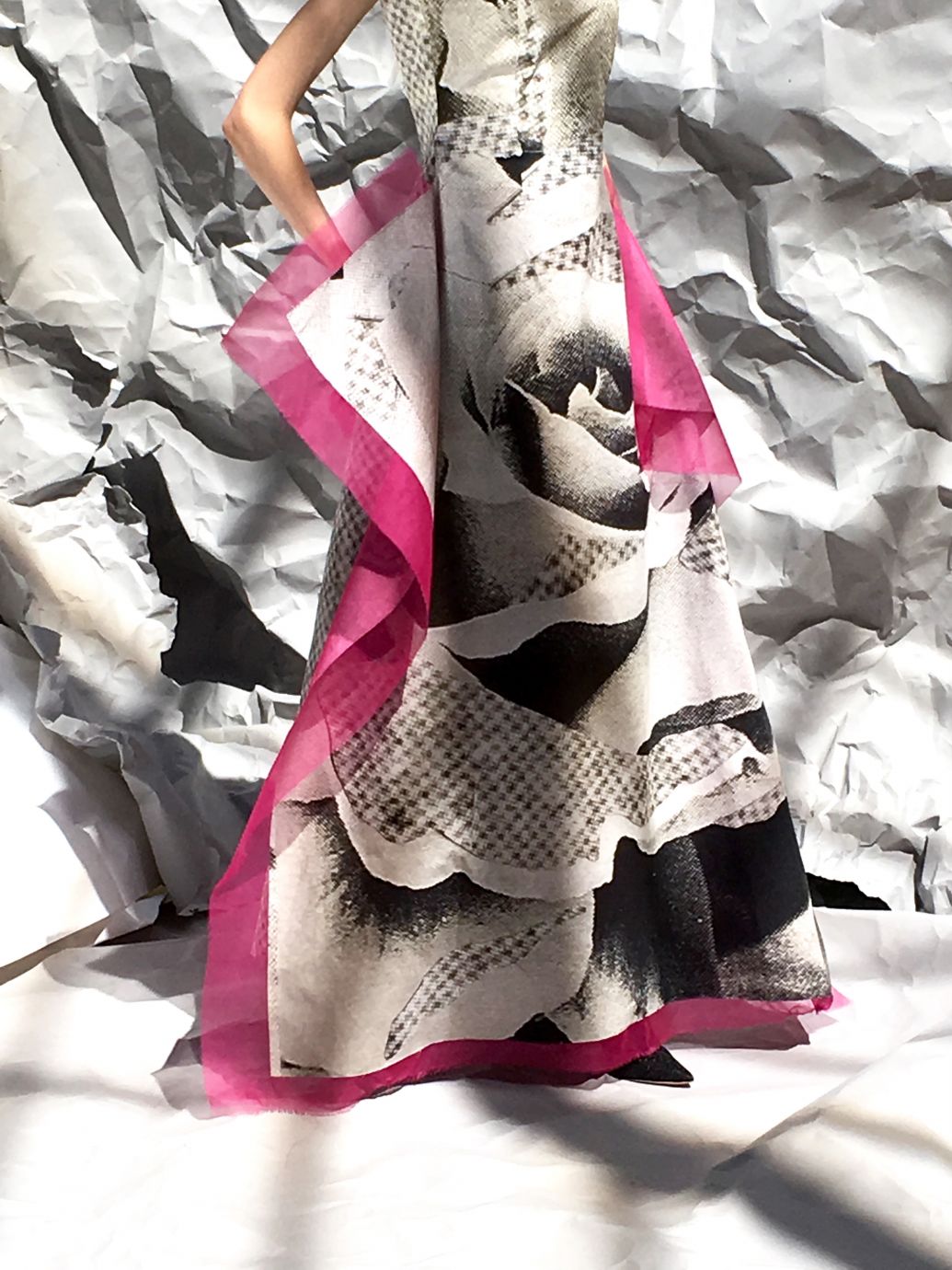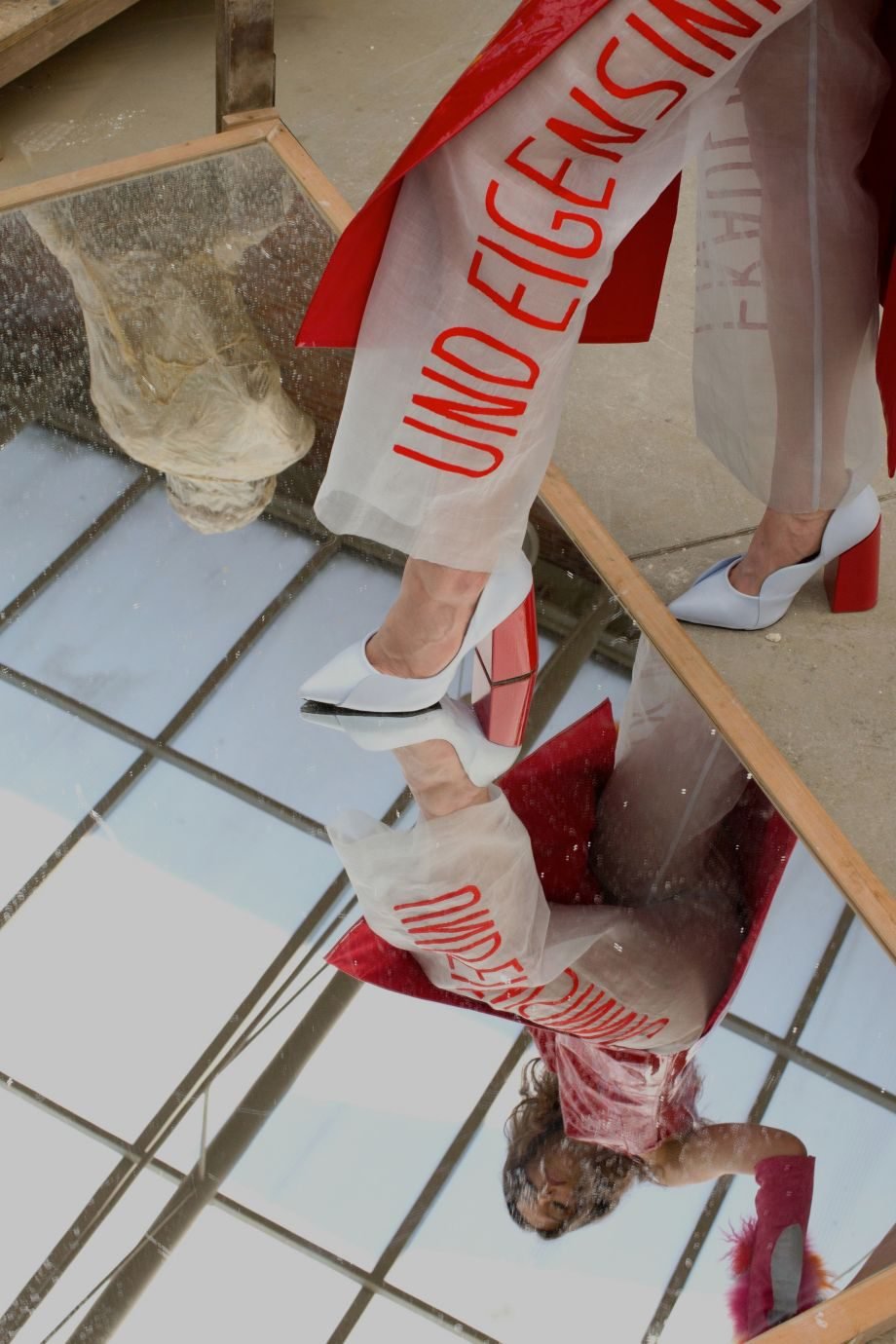What was the main inspiration behind your collection?
The starting point for my collection this year was that I wanted to work around the concept that showed the power and strength of fashion photography and fashion imagery. I’ve always been attracted to highly stylised and iconic fashion images in magazines and advertisements and they were the main inspiration for starting the collection. During a walk through the Paris metro stations I came across an advertisement from the department store Les Galleries Lafayette. On the advertisement there were two models wearing very skinny trousers. From the waist up, the poster was ripped off and the silhouette of the long legs continued into the rips of the paper. It created a new and abstract silhouette. Seeing these ripped advertisements, I started to get interested in the idea of creating, by an act of aggression on a beautiful picture, a kind of tension or disruption of an image.
I started by making collages and 3D paper compositions myself, with images I found in the archive of the MoMu library in Antwerp. Glossy pictures of women’s faces are disrupted by paper rips and shreds resembling the damaged advertisements, creating a tension and roughness in contrast to the beauty showcased in fashion photography. Afterwards I made blow-ups of these prints and started to think how I would translate them to into three-dimensional garments.
For the shapes of the clothing I looked to the clean and architectural volumes of mid-century couture gowns. They had an elegance but also a kind of static and strong feeling that worked really well with the impact of the prints. I used trompe l’oeil effects by printing the paper collages on different fabrics and reinforcing them with stiff Vlieseline and paper. This way, it has the effect and lightness of paper but the fabrics have enough stiffness and structure to hold the shapes. I also worked with pleating systems in full skirts where the two pictures are fused together to recreate the feeling of rotating billboards.

